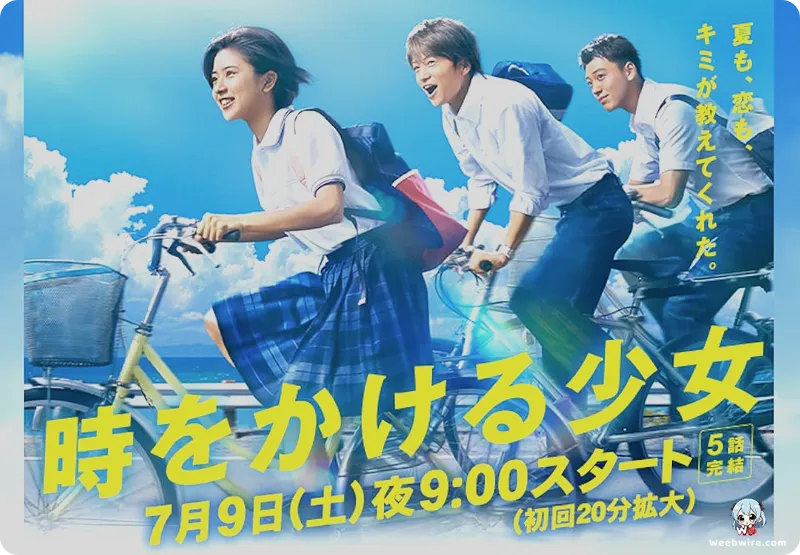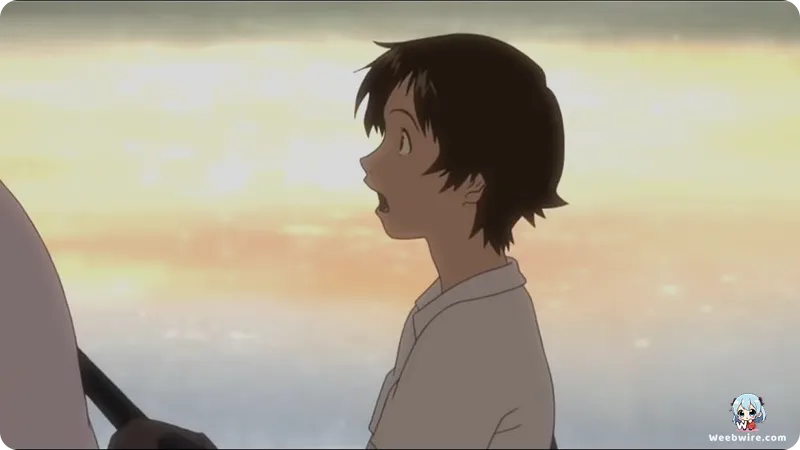The Girl Who Leapt Through Time: Unveiling the Enduring Artistry and Hidden Layers of a Modern Anime Classic

Over fifteen years have passed since Mamoru Hosoda's seminal animated feature, 'The Girl Who Leapt Through Time,' first captivated audiences in July 2006. Widely lauded for its emotional resonance and breathtaking visuals, a deeper dive reveals a treasure trove of subtle details that elevate it beyond a simple time-travel narrative. Produced by the acclaimed MADHOUSE studios, this film stands as a meticulously crafted ode to youth, the weight of choices, and the profound art of 'being present.' Its enduring legacy is a testament to its masterful storytelling and timeless themes that continue to resonate with viewers across generations.
A Spiritual Successor, Not Just an Adaptation
At its heart, the movie explores time travel through Makoto Konno, a vibrant high school student who unexpectedly gains the ability to 'leap' backward in time. Intriguingly, the 2006 film is not a direct adaptation of Yasutaka Tsutsui's 1967 novel, but a thoughtful spiritual sequel. This creative choice allows the film to build upon the original's foundation while forging its own unique path. The original novel's protagonist, Kazuko Yoshiyama, appears as Makoto’s enigmatic Aunt Kazuko, a painting restorer. This subtle yet significant connection implies the aunt's own past encounters with time travel, hinting at a generational legacy and a shared understanding of its complexities. Her profession—restoring fragmented art—serves as a beautiful metaphor for the film's overarching themes: mending past mistakes, piecing together broken moments, and appreciating the 'original state' of experiences before they are altered by regret or missed opportunities. This narrative depth adds a layer of intellectual engagement to the emotional journey.
Mamoru Hosoda's Distinctive Vision
Director Mamoru Hosoda, even before founding the renowned Studio Chizu, showcased his distinctive vision and directorial prowess with this film. 'The Girl Who Leapt Through Time' established his signature style: a masterful blend of fantastical concepts with grounded, relatable human drama, all set against meticulously detailed, authentic Japanese daily life. Hosoda consistently prioritizes deep character development and emotional authenticity, ensuring that the fantastical element of time travel enhances, rather than dominates, the narrative's emotional beats. Makoto's initial whimsical use of her powers—avoiding tardiness, prolonging karaoke sessions, or simply reliving pleasant moments—makes the eventual, significant consequences of her actions resonate deeply with the audience. Her journey from playful experimentation to profound realization is a cornerstone of the film's emotional impact.

Authenticity in Performance and Animation
The film's voice acting is another standout element that contributes to its realism. Riisa Naka, who voiced Makoto Konno, was relatively new to the craft at the time of production. Her performance garnered widespread acclaim for its raw, naturalistic quality, perfectly embodying a teenager's chaotic energy, impulsiveness, and underlying vulnerability. This unvarnished delivery eschewed typical anime voice-acting conventions, contributing significantly to the film's grounded realism and fostering a genuine audience connection with Makoto's journey of self-discovery and growth. MADHOUSE's animation is equally stellar. While not overtly flashy, the studio's meticulous attention to detail shines through in every frame, from subtle character expressions and fluid time leaps to breathtakingly realistic background artistry. The film brilliantly encapsulates the vibrant, nostalgic essence of a Japanese summer, complete with the ubiquitous chirps of cicadas and the warm glow of golden hour lighting. The iconic baseball field, a crucial meeting point for the protagonists, is rendered with loving precision, emphasizing the everyday normalcy that Makoto's extraordinary powers disrupt. The painstaking depiction of ordinary objects and settings firmly anchors the fantastical elements within a relatable reality, making the extraordinary feel truly personal.
The Evocative Power of Music
Kiyoshi Yoshida's evocative and profoundly moving musical score is instrumental in shaping the film's rich emotional landscape. His piano-driven melodies, often simple yet profound, perfectly underscore the film's core themes of fleeting youth, bittersweet first love, and the inexorable passage of time. Unlike many anime scores that might lean towards grand orchestral pieces, Yoshida's compositions are intimate and deeply personal, mirroring Makoto's internal struggles and quiet moments of reflection. While Oku Hanako's ending themes, 'Garnet' and 'Kawaranai Mono,' achieved immense popularity and became synonymous with the film, Yoshida's subtle background music truly guides the viewer through Makoto's intricate conflicts and emotional revelations, providing an understated yet powerful emotional anchor. The synergy between visuals, narrative, and music creates an immersive and unforgettable experience.
A Timeless Classic
Even for those who have experienced 'The Girl Who Leapt Through Time' multiple times, a rewatch consistently reveals new layers of symbolism, thematic richness, and emotional depth. Its enduring appeal stems not merely from its engaging premise but from its universal message about valuing the present moment, understanding the far-reaching impact of our choices, and the beauty of human connection. It stands as a powerful testament to animation's unique ability to convey complex human emotions with remarkable simplicity and grace, cementing its status as a timeless narrative that continues to resonate with new generations of viewers and reaffirming its place as a beloved classic within the esteemed pantheon of anime cinema. The film serves as a poignant reminder that while we cannot change the past, we can always choose how we live in the present and shape our future.
Credits
The Girl Who Leapt Through Time
Author
Yasutaka Tsutsui
Cover Art
Yoshiyuki Sadamoto (Character Designer)
Studio
MADHOUSE
Publisher
Kadokawa Shoten
Producers





